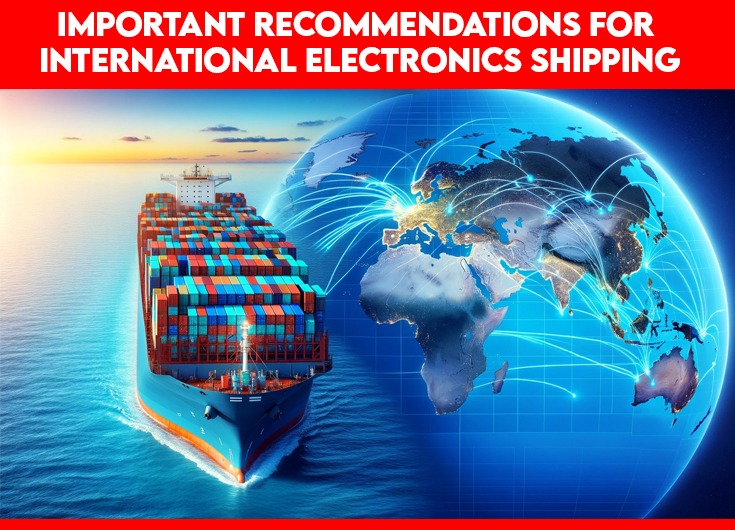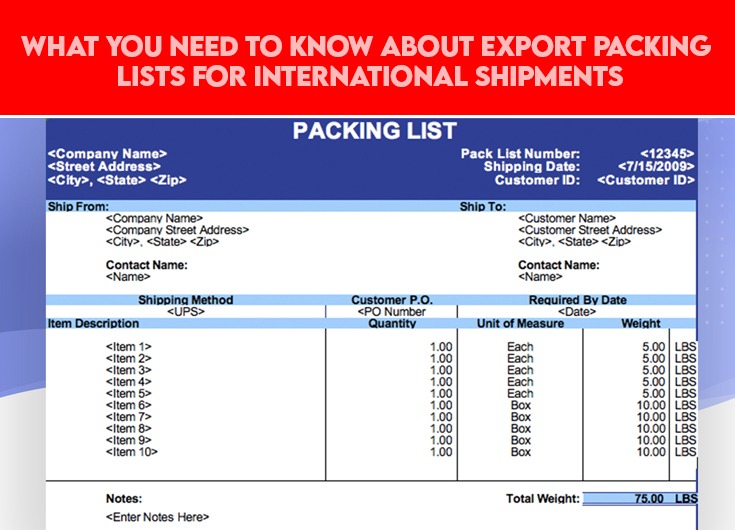In logistics and shipping, ensuring the safe and efficient transport of goods is always a top priority. However, when it comes to shipping electronics, the stakes are notably higher, and the challenges more complex. Unlike transporting textiles and general merchandise, shipping electronic devices demands a meticulous approach.
The journey begins with recognizing that electronic shipments typically fall into the ‘fragile’ category. Ensuring their pristine condition upon arrival requires careful handling and the right packaging techniques. Extra effort is not an option but a necessity. Whether you’re managing a single shipment or orchestrating a large-scale operation, you’ll face a set of unique challenges. The path to successful international electronics shipping involves considerations such as shipping costs and insurance, requiring careful navigation.
This blog serves as your guide, helping you traverse the intricate terrain of shipping electronics on a global scale. We’ll delve into the nuances that differentiate it from conventional shipping practices, emphasizing the importance of strategic planning and meticulous execution. By the end, you’ll be well-equipped to tackle the complexities of international electronics shipping successfully.
Determining Shipping Costs for Electronics
Shipping electronics involves several variables that impact the overall cost. Key factors include the package’s size, weight, shipping distance, and choice of carrier. Understanding these factors is crucial for effective cost management and shipping decisions. Sometimes, opting for flat-rate boxes can be a cost-effective strategy. With flat-rate shipping, you pay a set price regardless of the package’s contents, as long as it fits within the designated box size. This approach can streamline your shipping expenses and simplify decision-making.
Shipping Methods for Electronics
International shipping offers various methods, including air, sea, and courier services. The choice between air and sea freight depends on factors like speed, cost, and the nature of your electronics. Air freight is faster but can be more expensive, while sea freight is more economical for larger shipments. Each method has its pros and cons, so it’s essential to choose the one that best aligns with your shipping needs.
Choosing a Reliable Shipping Carrier
Selecting a reliable shipping carrier is paramount when shipping electronic goods. Opt for carriers known for their expertise in handling electronics and international shipments. To make an informed choice, read reviews and seek recommendations. Additionally, be mindful of the added complexities involved in international electronics shipping, such as customs requirements, essential paperwork, and potential fees. Thoroughly evaluate these factors when deciding on a shipping service.
Key Considerations for Packing Electronics
- Proper Packaging: Meticulous packaging is crucial for safeguarding your electronics and minimizing shipping costs in the long run.
- Suitable Packaging Material: Choose materials that provide optimal protection for your electronic devices. Ensure they are sturdy and durable to withstand the rigors of international transit.
- Secure and Cushion Electronics: Use appropriate materials like bubble wrap or foam to protect delicate components, effectively securing and cushioning your electronics.
- Label Packages as “Fragile”: Labeling packages as “fragile” encourages careful handling during transit and can significantly impact the condition of your electronics upon arrival.
The Importance of Shipping Insurance
Valuable electronics need extra protection, making shipping insurance essential for safety and compensation if something goes wrong during transit. Most shipping carriers offer limited coverage, especially for expensive items. To ensure comprehensive coverage and faster claims processing, consider third-party shipping insurance. Additionally, choose a shipping service with real-time tracking to monitor your shipments and gain peace of mind.
International electronics shipping is a multifaceted endeavor that demands meticulous planning and adherence to best practices. These recommendations are crucial for ensuring the secure and successful delivery of your valuable electronic devices worldwide. Whether you’re an experienced shipper or new to international logistics, these guidelines will help you achieve a smooth and protected shipping experience. Instead of merely searching for a cheap courier service, prioritize a service that guarantees the safety and security of your shipments. Focus on proper packaging, security protocols, and thorough research to embark on your international electronics shipping journey with confidence. Additionally, consider eco-friendly packaging alternatives to minimize the environmental impact of your shipments, as responsible packaging choices can make a significant difference.




